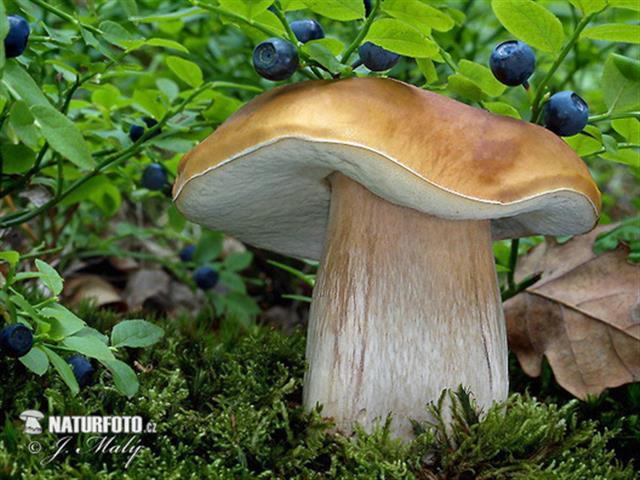Penny Bun: Red Data Book of Armenia

Category. VU– Vulnerable.
Brief description. Cap is 5–15 (30) cm across, pulvinate, fleshy. The colour often depends on biotope and ecological conditions – dark brown or greyish–brown or pale yellowish. The lower part of the cap, which is white at first, has spongy–like surface with small pores, whereas mature species have yellow–greenish colouring. The flesh is white, firm. Stipe is 7–12 x 2–6 cm long, robust, pallid white net: with conspicuously white at the top, then dirty white or grey reticulum/net. It is clavate, equally widened towards the base. Spore print is yellow–brown. Spores are 15–18 x 3,8–5 µm, fusiform, smooth, light brown.
Distribution. Generally in Europe, Asia, North America, North Africa, Australia, Southern Caucasus (Azerbaijan, Georgia, Armenia). It is widely spread in a number of countries of the world, but in Armenia it is rarely met, mainly in unique individuals. It is discovered in Ijevan floristic region – in "Dilijan" National Park, Zangezur floristic region – in the surroundings of Goris city; Aparan floristic region – in the riverside of the river Marmarik; in Lori floristic region – in Tumanyan Station.
Ecological, biological and phytocenological peculiarities. In Armenia it is found on the soil, in coniferous, deciduous and mixed woods on the altitude of 1000–1900 m above sea level from May to late autumn. Mycorrhizal fungi, with oak, pine and hornbeam. It is among the most delicious and valuable mushrooms.
Main factors of endangering. Intensive forest exploitation, uncontrolled fellings, loss of habitats, collection of mushrooms by the population.
Nature conservation measures. In Armenia it is conserved in corresponding ecosystems of "Dilijan" National Park. It is necessary to carry out examination of extent of occurrence for discovering new biotopes.
Suggestions
 The Ministry of Environment sent a letter international partners to draw their attention to the real danger of environmental disasters as a result of Azerbaijan's large-scale aggression towards the territory of Armenia
The Ministry of Environment sent a letter international partners to draw their attention to the real danger of environmental disasters as a result of Azerbaijan's large-scale aggression towards the territory of Armenia
 Vicia pisiformis: Red Data Book of Armenia
Vicia pisiformis: Red Data Book of Armenia
 Vavilovia formosa: Red Data Book of Armenia
Vavilovia formosa: Red Data Book of Armenia
 Trigonella capitata: Red Data Book of Armenia
Trigonella capitata: Red Data Book of Armenia
 Trigonella astroides: Red Data Book of Armenia
Trigonella astroides: Red Data Book of Armenia












